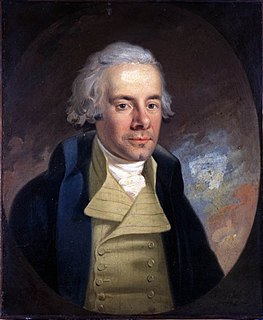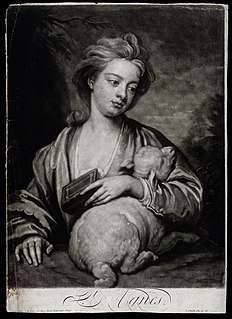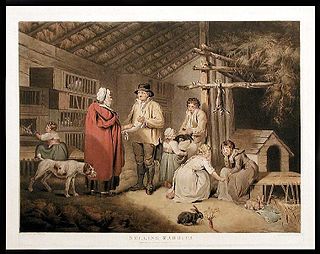Life
Rising had a large practice in London, and was a regular exhibitor at the Royal Academy from 1785 until his death. Among his subjects were William Wilberforce, Lord Melville, Lord Nelson, Sir William Blackstone, Arthur Young, and Robert Bloomfield. Many of his portraits were engraved. The portrait of Blackstone went to the Bodleian Library, that of the first Marquis of Downshire to Hatfield House, and that of Wilberforce to the Earl of Crawford. Rising is said to have at one time assisted Sir Joshua Reynolds with the backgrounds of his pictures. He died in 1815, aged 59.< [1]

William Wilberforce was a British politician, philanthropist, and a leader of the movement to abolish the slave trade. A native of Kingston upon Hull, Yorkshire, he began his political career in 1780, eventually becoming a Member of Parliament for Yorkshire (1784–1812). He was independent of party. In 1785, he became an evangelical Christian, which resulted in major changes to his lifestyle and a lifelong concern for social reform and progress. He was educated at St. John's College, Cambridge.

Henry Dundas, 1st Viscount Melville, PC, FRSE was a Scottish advocate and Tory politician. He was the first Secretary of State for War and became, in 1806, the last person to be impeached in the United Kingdom, for misappropriation of public money. Although acquitted, he never held public office again.

Sir William Blackstone was an English jurist, judge and Tory politician of the eighteenth century. He is most noted for writing the Commentaries on the Laws of England. Born into a middle-class family in London, Blackstone was educated at Charterhouse School before matriculating at Pembroke College, Oxford in 1738. After switching to and completing a Bachelor of Civil Law degree, he was made a Fellow of All Souls, Oxford on 2 November 1743, admitted to Middle Temple, and called to the Bar there in 1746. Following a slow start to his career as a barrister, Blackstone became heavily involved in university administration, becoming accountant, treasurer and bursar on 28 November 1746 and Senior Bursar in 1750. Blackstone is considered responsible for completing the Codrington Library and Warton Building, and simplifying the complex accounting system used by the college. On 3 July 1753 he formally gave up his practice as a barrister and instead embarked on a series of lectures on English law, the first of their kind. These were massively successful, earning him a total of £453, and led to the publication of An Analysis of the Laws of England in 1756, which repeatedly sold out and was used to preface his later works.
Rising also painted fancy and domestic subjects: Juvenile Employment, Ballad Singers, The Sentimental Shepherd, and The Infant Narcissus. Some of them were mezzotinted by William Ward, John Jones, and others. [1]

Mezzotint is a printmaking process of the intaglio family, technically a drypoint method. It was the first tonal method to be used, enabling half-tones to be produced without using line- or dot-based techniques like hatching, cross-hatching or stipple. Mezzotint achieves tonality by roughening a metal plate with thousands of little dots made by a metal tool with small teeth, called a "rocker". In printing, the tiny pits in the plate hold the ink when the face of the plate is wiped clean. A high level of quality and richness in the print can be achieved.

William Ward, ARA (1766–1826) was an English engraver.
John Jones (c.1755–1797) was a British engraver.







